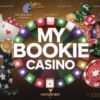If you step into sports betting or any wagering game, understanding odds is key. Odds show what you win and hint at the chance an event will occur. Odds come in three forms: American (moneyline), fractional, and decimal. Each style gives the same risk in a different look. Knowing each helps you check bets and keep losses low.

Types of Betting Odds
In American odds, two signs connect to the idea of winning. The minus sign ties to a favorite. It asks, “How much must you risk to get $100?” For example, -150 means risk $150 for $100 profit. The plus sign ties to an underdog. It answers, “How much profit comes from a $100 bet?” For instance, +200 gives $200 profit on a $100 bet. In each case, the wager also comes back on win.
Fractional odds show a simple link between profit and stake. A ratio like 6/1 ties $1 to a profit of $6. The profit adds with your bet to give a total win. This style is common in the UK.
In the world of decimal odds, the number ties directly to the payout per dollar. A value, for example 2.50, means each $1 bet returns $2.50 total. This method makes the math plain and quick.
Calculating Implied Probability
Odds hold a hidden show of chance. Converting odds to a percent helps you see a bet’s worth. For American odds, a formula ties plus and minus signs to chance. For fractional odds, the roll is simple: divide the lower number by the sum of both parts. For decimal odds, the chance is one divided by the number shown. These steps let you compare your own view with the bookmaker’s number.
For example, odds of +200 hint at a 33% chance. Fractional odds like 6/1 hint at about a 14% chance. See how the numbers tie directly to risk.
Understanding Betting Value and Odds Shopping
The bookmaker builds a fee into the odds. This step means that the true chance is a bit higher than shown. When you check odds on different sites, you may see better numbers. This use of math helps you spot bets where your own view of risk is better than the odds suggest.
Payments, KYC, and Legal Considerations
Many legal betting sites take fees with credit cards, e-wallets, and bank transfers. They ask for a quick ID check to stop fraud and underage problems. In the U.S., many zones now allow sports bets. Each area ties its own rules. In most cases, you must be at least 21. Responsible Gambling Resources
Betting holds risk. Only play with money you can spare. Set limits for both time and cash. Clear limits help you keep track and stop loss chasing. If you worry over betting, help stands near. Groups like Gamblers Anonymous or national helplines can help.
Knowing how to read betting odds ties you closer to your betting plans. With clear methods to check payouts and risk, you can see each bet with clear eyes. Be sure to play safe and stick to the rules in your zone.
This guide is for learning only. Play safe and check that you follow rules in your area.






























